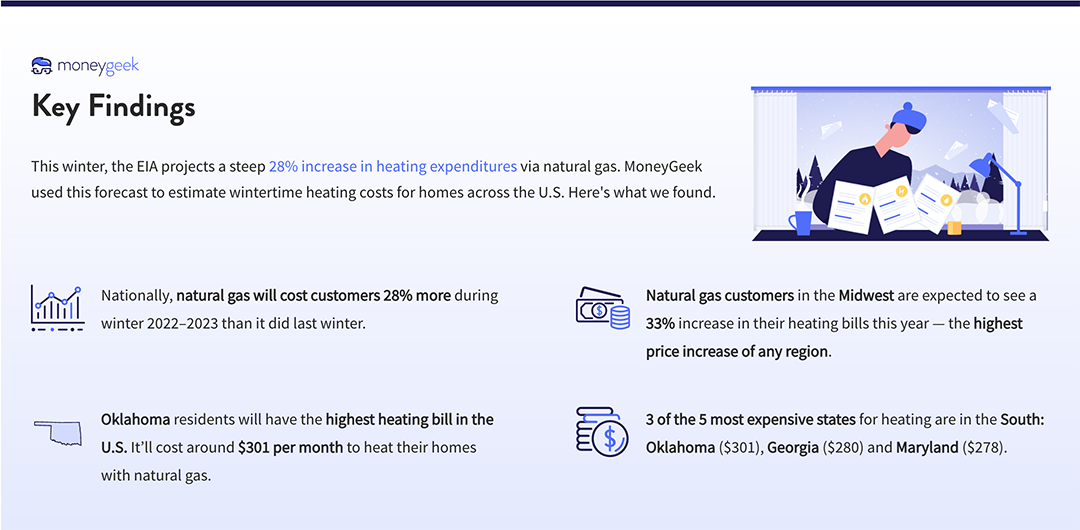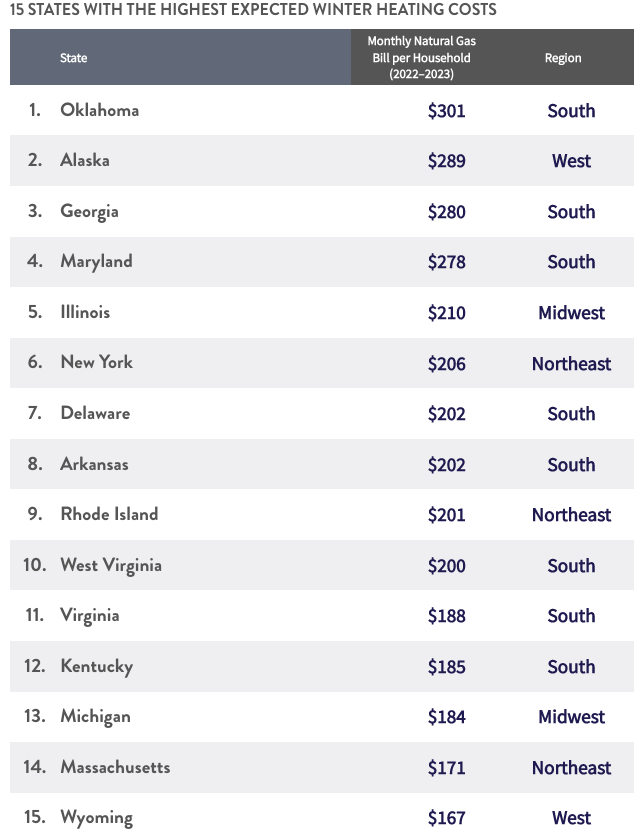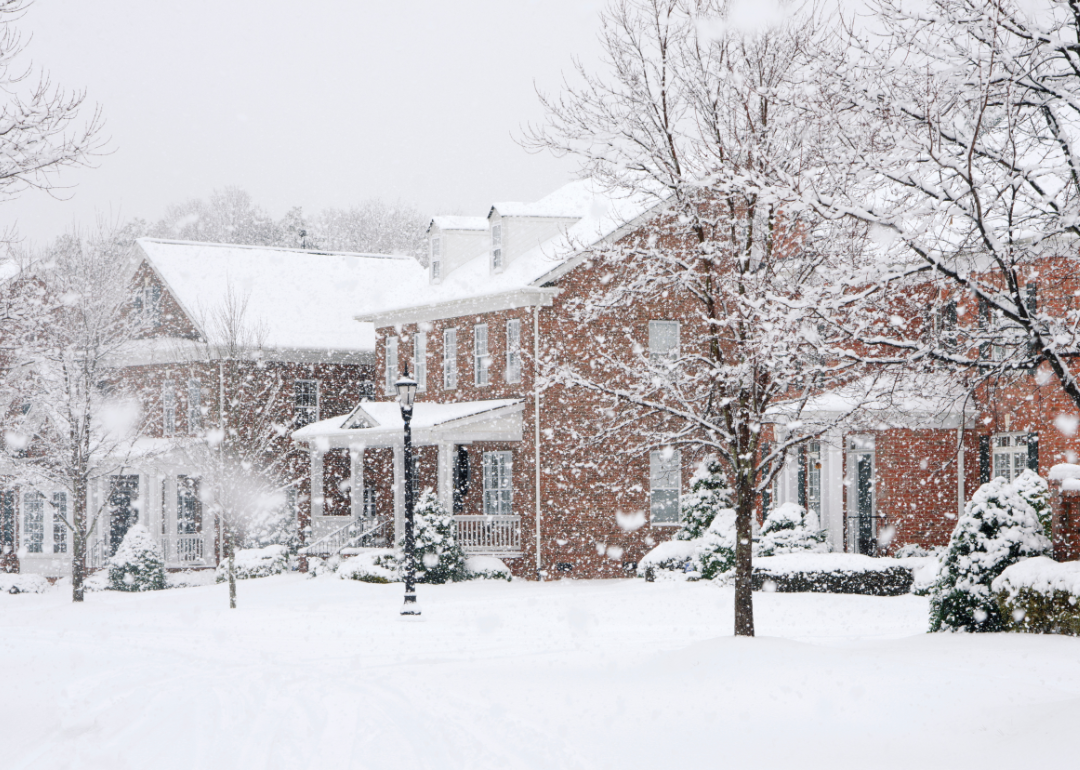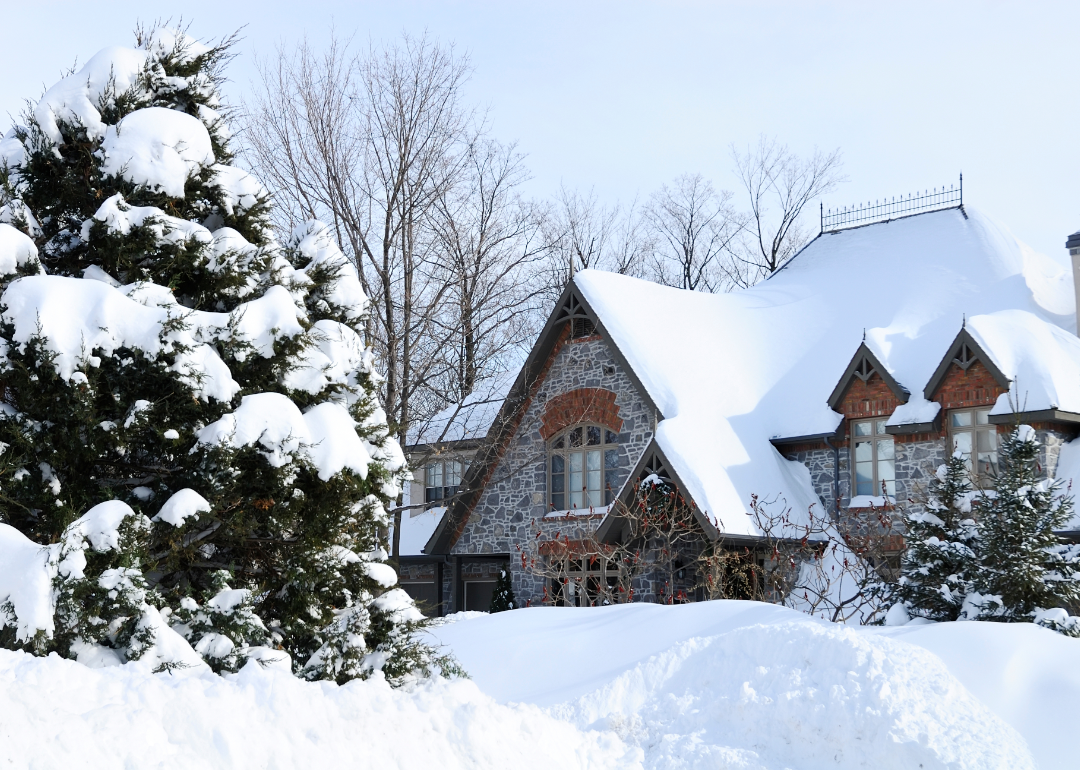The state with the highest heating bill this winter may surprise you: It’s not Alaska

Canva
The state with the highest heating bill this winter may surprise you: It’s not Alaska
To explore how rising natural gas prices could affect U.S. households this winter, MoneyGeek analyzed data from the Energy Information Administration to find which states are expected to have the highest heating prices this year. This analysis also determined which regions are expected to see the most significant bill increases since last winter.
With the winter months fast approaching, families nationwide can use this data to inform their budgets, learn more about heating bill assistance programs and prepare as best as possible. By taking additional steps to reduce home energy costs, households across the country can save money this winter and beyond.
![]()

MoneyGeek
Most expensive states for winter heating
An infographic projecting a 28% increase in heating expenditures via natural gas.
Using household data from the recently-released EIA Residential Energy Consumption Survey, natural gas consumption figures and average residential prices, MoneyGeek forecasted average heating bills across the U.S. and ranked the states with the most expensive expected heating bills for winter 2022–2023.
Oklahoma residents are expected to have the highest heating bills of any state this winter, at an estimated cost of $301 per month. Interestingly, though the cost of heating increased the most in the Midwest, 3 of the 5 most expensive states for heating overall are located in the South.

MoneyGeek
Oklahoma is expected to lead nation for highest winter heating costs
A table showing 15 states with the highest expected winter heating costs
The South leads with the most states expected to have high winter heating costs this season, with Oklahoma beating Alaska and New England states like Massachusetts and Rhode Island.

Canva
Regions with the largest winter heating price increases
A row of brick houses in a snow storm.
Overall, natural gas customers across the country will see a surge of 28% in their heating costs this year; however, price increases won’t impact every region of the United States equally. Below, MoneyGeek ranked the areas with the highest expected percentage increases in heating costs this winter, along with the top three most expensive states for heating in each region.
1. The Midwest
With an expected increase of 33%, the Midwest will experience the highest average increase in heating bills this winter. When looking at average monthly heating bills per state in this region, the most expensive are Illinois ($210), Michigan ($184) and Ohio ($160).
- Illinois
- Expected Monthly Natural Gas Heating Bill (2022-2023): $210
- Price Difference in Monthly Bill (2021–2022): $52
- Michigan
- Expected Monthly Natural Gas Heating Bill (2022-2023): $184
- Price Difference in Monthly Bill (2021–2022): $46
- Ohio
- Expected Monthly Natural Gas Heating Bill (2022-2023): $160
- Price Difference in Monthly Bill (2021–2022): $40
2. The West
Trailing close behind as the region with the second highest heating costs is the West, where residents can expect price hikes of 29% in natural gas this season. How much is the heating bill per month here? For residents of Alaska, the expected cost is $289 per month. Customers in Wyoming will likely pay $167, and those in Utah will cost $161 per month.
- Alaska
- Expected Monthly Natural Gas Heating Bill (2022-2023): $289
- Price Difference in Monthly Bill (2021–2022): $65
- Wyoming
- Expected Monthly Natural Gas Heating Bill (2022-2023): $167
- Price Difference in Monthly Bill (2021–2022): $38
- Utah
- Expected Monthly Natural Gas Heating Bill (2022-2023): $161
- Price Difference in Monthly Bill (2021–2022): $36
3. The South
Average monthly heating bills are also on the rise in the South. Residents here will pay 23% more in 2022 than in 2021. After being affected by last year’s polar vortex, customers in Oklahoma will pay the highest heating prices in the country ($301). Georgia and Maryland are third and fourth on the list of states with the highest heating costs, at $280 and $278, respectively.
- Oklahoma
- Expected Monthly Natural Gas Heating Bill (2022-2023): $301
- Price Difference in Monthly Bill (2021–2022): $56
- Georgia
- Expected Monthly Natural Gas Heating Bill (2022-2023): $280
- Price Difference in Monthly Bill (2021–2022): $52
- Maryland
- Expected Monthly Natural Gas Heating Bill (2022-2023): $278
- Price Difference in Monthly Bill (2021–2022): $52
4. The Northeast
Keeping your home warm will also be 22% more expensive in the Northeast this year. The priciest states for heating in this region are New York ($206), Rhode Island ($201) and Massachusetts ($171).
- New York
- Expected Monthly Natural Gas Heating Bill (2022-2023): $206
- Price Difference in Monthly Bill (2021–2022): $37
- Rhode Island
- Expected Monthly Natural Gas Heating Bill (2022-2023): $201
- Price Difference in Monthly Bill (2021–2022): $36
- Massachusetts
- Expected Monthly Natural Gas Heating Bill (2022-2023): $171
- Price Difference in Monthly Bill (2021–2022): $30

Canva
The safety risks of using alternative heating methods to save money
A closeup view of a space heater.
With heating costs increasing this year across the board, many people may be tempted to use alternative heating methods such as space heaters and fireplaces. The National Fire Protection Association’s (NFPA) 2021 Home Heating Fires Report warns against this and highlights that heating equipment is the leading cause of fires in U.S. homes.
According to the NFPA’s study, stationary or portable space heaters are responsible for 81% of home fire deaths caused by heating equipment. And fireplaces or chimneys are involved in three out of 10 home fires caused by heating equipment. Given those findings, the Association’s recommendations are to:
- Get stationary space heaters, water heaters and central heaters professionally installed in compliance with local codes and manufacturer’s instructions.
- Schedule annual inspections of your heating equipment and chimneys.
- If you use a portable heater, make sure it is turned off before leaving a room or going to sleep.
Before using alternative heating methods, consider getting help with your heating bill or exploring other ways to save on your heating costs. Some households may qualify for the Low Income Home Energy Assistance Program (LIHEAP) this winter season. And taking steps to winterize your home can also help save on heating costs while minimizing risks.
Exploring these avenues can be especially advantageous when considering that insurance coverage varies when it comes to alternative heating methods. While turning on a space heater or lighting a fire in your fireplace may help you save money on your monthly heating bill, many homeowners may find out too late they are not fully covered in the event of an accident. Therefore, it’s essential to understand what your policy covers in terms of the top winter home insurance claims. Before using alternative heating methods, learn about the risks and find an affordable renters insurance plan or buy a quality home insurance policy to protect your property in the event of an accident.

Canva
Methodology
A log cabin in a wooded area covered with snow.
MoneyGeek analyzed data from the U.S. Energy Information Administration (EIA) to estimate how much more natural gas heating will cost around the country this winter (2022–23) than it did last (2021–2022).
To determine 2021 natural gas heating bills per household, MoneyGeek used gas consumption data and retail prices for residential customers from November 2021.
Our data team utilized the EIA’s Winter Fuels Outlook to determine how consumption and prices will change for winter 2022–2023.
MoneyGeek used household data from the recently released EIA Residential Energy Consumption Survey (2020) and regional data from the Winter Fuels Outlook to estimate the number of households using natural gas, specifically for winter heating purposes. MoneyGeek used this figure to help estimate natural gas expenditures per household in each state for 2022–2023.
Limitations: Regional projections for consumption and prices from the EIA were used to generate 2022 figures rather than projections for each state. This methodology reflects the percentage increase figures for states in each of those regions.
This story originally appeared on MoneyGeek and has been independently reviewed to meet journalistic standards.





